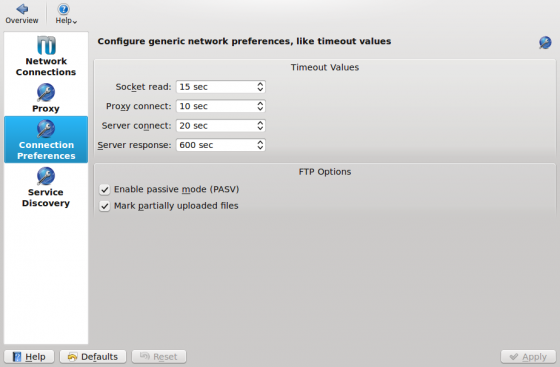File transfers/zh-cn: Difference between revisions
m Created page with "==基本文件传输==" |
m Created page with "几乎所有 KDE 程序都能用来连接到远程服务器。你可以根据任务要求使用适合的程序。比如,如果你想要浏览器远程服务器,最好的选..." |
||
| Line 8: | Line 8: | ||
==基本文件传输== | ==基本文件传输== | ||
几乎所有 KDE 程序都能用来连接到远程服务器。你可以根据任务要求使用适合的程序。比如,如果你想要浏览器远程服务器,最好的选择就是 [[Special:myLanguage/Dolphin|Dolphin]] 或 [[Special:myLanguage/Konqueror|Konqueror]]。要编辑网页,你可以无需单独的 FTP 服务器直接用 [[Special:myLanguage/Quanta|Quanta]]。这里的例子中,我们会用 '''Dolphin''',通过 FTP 传输文件。 | |||
==Connect to a FTP server== | ==Connect to a FTP server== | ||
Revision as of 12:11, 7 October 2010
介绍
这份指南描述如何用 KDE 软件汇集(Software Compilation)跟远程服务器进行文件传输。从 FTP 服务器下载文件或是通过 SSH 保存文件。
KDE SC 并没有包含你可能在其他平台看到的标准 FTP 客户端。有一些第三方的程序像是 Kasablanca 或 KFTPgrabber,但它们还没完全迁移到 KDE 开发平台 4(KDE Platform 4)。好消息是你不需要那样的程序来管理远程服务器上的文件。KDE 平台(KDE platform)拥有更强大的技术来处理这种情况。
基本文件传输
几乎所有 KDE 程序都能用来连接到远程服务器。你可以根据任务要求使用适合的程序。比如,如果你想要浏览器远程服务器,最好的选择就是 Dolphin 或 Konqueror。要编辑网页,你可以无需单独的 FTP 服务器直接用 Quanta。这里的例子中,我们会用 Dolphin,通过 FTP 传输文件。
Connect to a FTP server
To connect to a FTP server just open Dolphin and click on an empty place in the address bar. Type the address of your server into the address bar. Don't forget the ftp:// at the beginning:
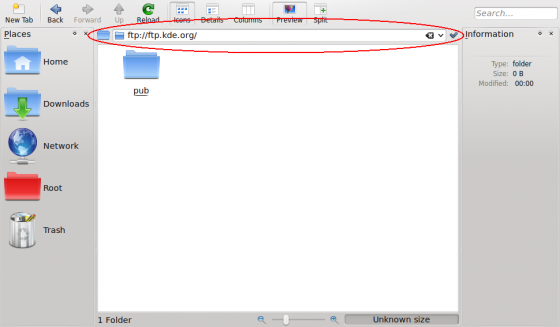
If your server requires authentication you will be prompted for your credentials in a popup dialog. Enter your username and password. If you wish to save them, check the relevant checkbox. Dolphin will store your passwords securely in your KDE Wallet. For faster access you can insert the username and password directly in the address bar using this format: ftp://username:[email protected]; however we do not recommend this, as it is a security risk. Not only is it visible in your location bar, but it is stored in plain text, and so can be easily read by anyone with access to your home folder. Storing the password in KWallet is much safer, providing you have protected your KWallet with a password.
Other protocols
FTP is just one example of the many different protocols that the KDE platform supports. There is a whole lot more to explore. To see a list of all supported protocols, click on the tick next to the address bar to switch to browse mode...

...and then on the ftp button at the beginning.
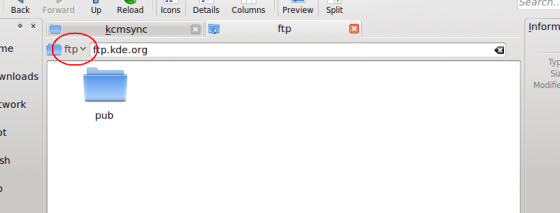
The protocol selector should appear similar as shown on the next screenshot. What protocols are available on your system, depends on which KIO plugins you have installed.
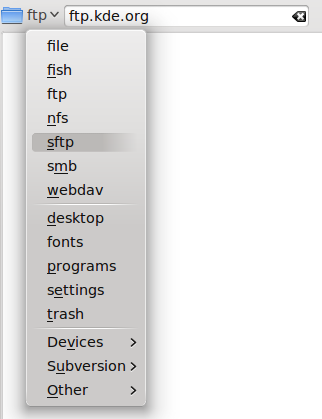
Note: Due to KDE bug #55804, files moved or copied from the local machine to a remote machine via the fish protocol have the wrong timestamps. A workaround is to use SFTP for transferring files to another machine.
Imitate a standalone FTP client using Dolphin
If you want a more standalone-ftp-client like experience you can use Dolphin's split view:
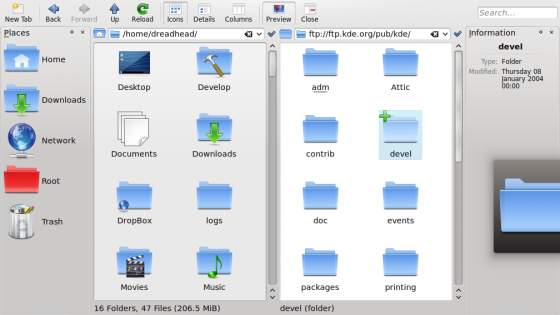
Add a remote folder to your places bar
You can drag and drop a remote folder directly to your places and bookmark it:
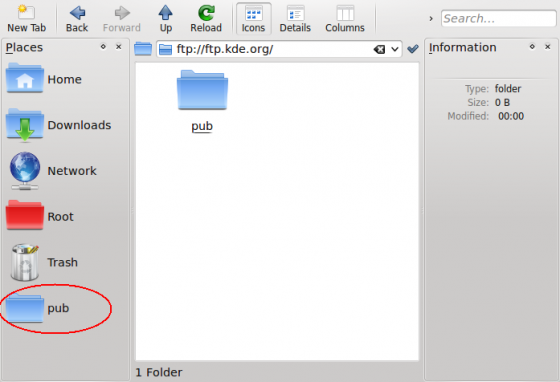
Directly access remote files in other KDE applications
As already said previously, nearly every KDE application is capable of accessing remote files and folders. For example, you can open a remote website directly in Kate by inserting the address in the file open dialog:
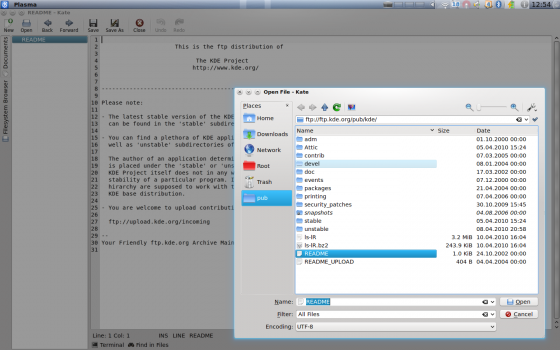
You can now edit the file in Kate. When you click the file will be directly uploaded to the server. That way, you don't need to download files before editing and upload them again after editing.
Changing settings
You probably miss some settings seen in standalone file transfer clients now, such as switching active and passive mode in FTP or timeout settings for your connections. Don't worry, you can find them in System Settings under . The section may be especially useful.
